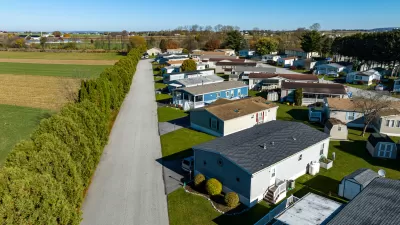State leaders see the influx of younger residents as a boon to Maine’s economy, but this could come at the expense of affordable housing.

Small communities in America’s easternmost state are feeling the impact of pandemic-era demographic shifts as an influx of younger residents brings a mixture of benefits and challenges. As Jenna Russell explains in a piece for The New York Times, “Maine, Vermont and New Hampshire have seen an uptick in new residents arriving from other states, more than 50,000 across the three states since April 2020, even as other Northeastern states — and especially large metro areas — have experienced a surge in out-migration.”
For Maine, the growth is significant, reversing the longstanding trend of a dwindling, aging population. “Population shifts — even small ones — carry high stakes in this rural, sparsely populated state, and across northern New England, where leaders have worried for years about a so-called ‘silver tsunami’ with implications for the economy and the fate of rural communities.” Now, the increase in younger residents is breathing new life into the state’s economy, but is also driving a steep rise in housing costs.
Between 2020 and 2021, Maine was the only state in the nation to see its median age decline thanks to an influx of younger residents moving in during the pandemic. In one Maine county, median home prices surged by 60 percent between 2019 and 2022. Like many small communities around the country, local and state leaders must now grapple with the challenges to housing affordability and infrastructure that growth brings.
FULL STORY: In Maine, a Rare Influx of New Residents, and a Housing Crunch

Study: Maui’s Plan to Convert Vacation Rentals to Long-Term Housing Could Cause Nearly $1 Billion Economic Loss
The plan would reduce visitor accommodation by 25,% resulting in 1,900 jobs lost.

North Texas Transit Leaders Tout Benefits of TOD for Growing Region
At a summit focused on transit-oriented development, policymakers discussed how North Texas’ expanded light rail system can serve as a tool for economic growth.

Why Should We Subsidize Public Transportation?
Many public transit agencies face financial stress due to rising costs, declining fare revenue, and declining subsidies. Transit advocates must provide a strong business case for increasing public transit funding.

How to Make US Trains Faster
Changes to boarding platforms and a switch to electric trains could improve U.S. passenger rail service without the added cost of high-speed rail.

Columbia’s Revitalized ‘Loop’ Is a Hub for Local Entrepreneurs
A focus on small businesses is helping a commercial corridor in Columbia, Missouri thrive.

Invasive Insect Threatens Minnesota’s Ash Forests
The Emerald Ash Borer is a rapidly spreading invasive pest threatening Minnesota’s ash trees, and homeowners are encouraged to plant diverse replacement species, avoid moving ash firewood, and monitor for signs of infestation.
Urban Design for Planners 1: Software Tools
This six-course series explores essential urban design concepts using open source software and equips planners with the tools they need to participate fully in the urban design process.
Planning for Universal Design
Learn the tools for implementing Universal Design in planning regulations.
Ascent Environmental
Borough of Carlisle
Institute for Housing and Urban Development Studies (IHS)
City of Grandview
Harvard GSD Executive Education
Toledo-Lucas County Plan Commissions
Salt Lake City
NYU Wagner Graduate School of Public Service





























